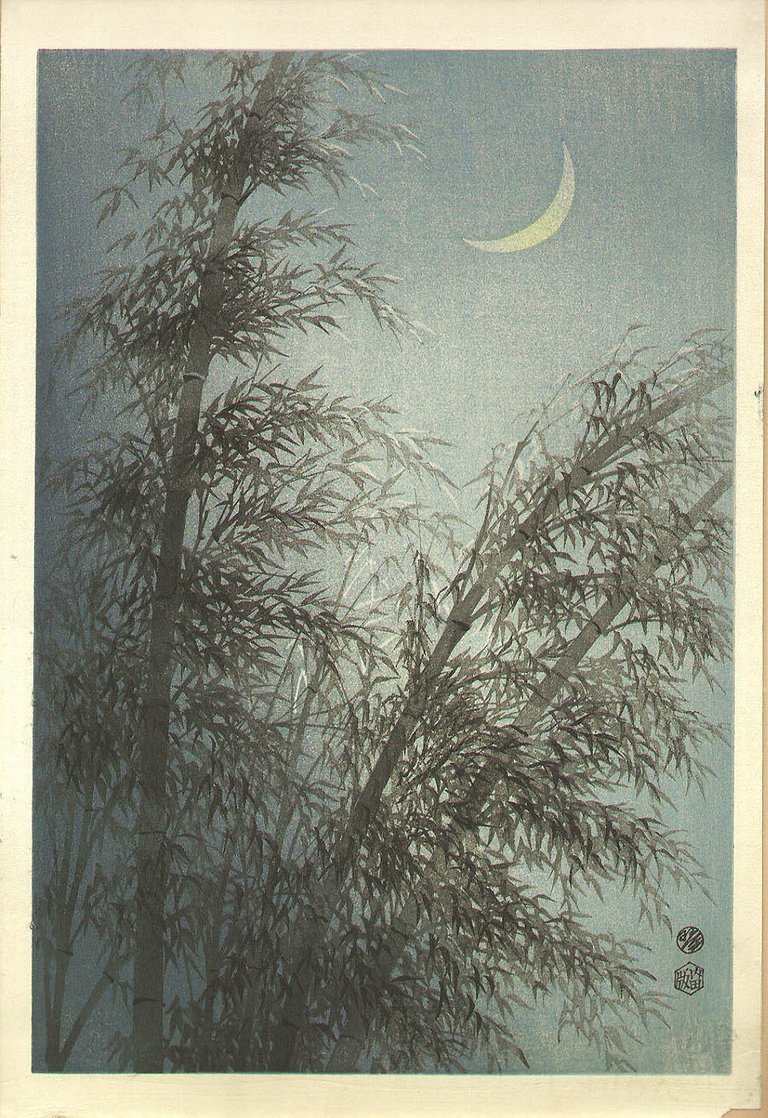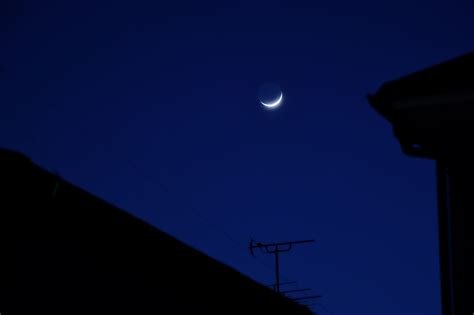Silent Moon ~ Haiku of Japan
三日月にひしひしと物の静まりぬ 千代尼
mikazuki ni hishihishi to mono no shizumarinu
at the crescent moon
the feeling
of silence
—Chiyo-ni
(trans. David LaSpina[1])

Basho taught that in order to write haiku, one had to clear their mind and become one with whatever they are writing about.
He put it this way:
Learn about the pine from the pine and the bamboo from the bamboo. The object and yourself must become one, and from that feeling of oneness issues your poetry.
Chiyo-ni really embraced this ideal. The vast majority of her haiku were about nature. She completely immersed herself in nature, and told us what she saw.
In this haiku hishihishi is an onomatopoeia that means something like "an awareness". In meditating—stopping the constant chatter of the mind—one grows aware the world in a way that we rarely experience when we are always listening to our thoughts.
The kigo here is mikazuki, by the way. Literally it is third day moon, but we can interpret that as crescent moon, as that is what is three nights from the new moon. Another kigo for the same thing is tsuki no mayu (月の眉), eyebrow moon, as this is also what it kind of looks like. Hmm... maybe an upside down eyebrow, but still...

In haiku, nearly all mentions of the moon are autumn kigo. This is the time when moon viewing parties became the main social events. Next to cherry blossoms, the moon is the most common subject of haiku.
That is, me! If you like this translation, feel free to use it. Just credit me. Also link here if you can. ↩
Your content has been voted as a part of Encouragement program. Keep up the good work!
Use Ecency daily to boost your growth on platform!
Support Ecency
Vote for Proposal
Delegate HP and earn more
This post has received a 100.00% upvote from @fambalam! Join thealliance community to get whitelisted for delegation to this community service.
kigo in autumn is very beautiful
I learn something new every time I read one of your posts m8.
I didn't know that the moon was a focus of autumn in traditional japanese haiku.
That haiku by Chiyo-ni is really beautiful and elegant in its simplicity. A great translation and I'm guessing it follows the syllabic form in Japanese but doesn't translate as 5/7/5?
Glad you enjoyed it 😃 I'll have to do a post about kigo, especially about the moon and cherry blossoms. Those two kigo pre-date haiku by quite a bit and were always very important seasonal words in Japanese poetry.
The original here is 5/8/5 actually. As I mentioned before, before modern times they weren't super concerned about sticking to the "correct" count. At any rate, early translators tried to maintain the exact same syllable count, but it usually resulted in "padded" haiku that sounded awkward. Japanese words take up more syllables than English words, making 5/7/5 much shorter in Japanese than it is in English, so maintaining the same count doesn't work anyway. For these reasons, I translate as directly as possible and attempt to maintain more of a feeling of the meaning of the original rather than the cadience.
Great, I really loved the images, it connects perfectly with what you explain in the post. Very nice autumn moon.
Glad you enjoyed it 😃
Perfectly put. This is sometimes I consider to be the basics of writing poetry if you can't feel, if you can't unite, you can't write poetry nor poems. It is the same case for Haiku I see.
Didn't know about this. Such a mesmerizing concept. It is true and factual that "moon" is a subject to romance and emotions from time to time. Therefore, it isn't quite surprising but I can connect. What is more surprising to me is the "moon-viewing parties as a main social event!" This world is amazing and so much more to learn from it awaits.
Thank you @tahminasyed for the great comment.
Moon viewing parties were actually a thing in the West too. It's understandable; before electricity, the full moon was the best source of light at night, so people celebrated it and threw social parties to corresponds with the full moon.
Wasn't aware of it. Wao. Life used to be quite simple, hu? Wao.